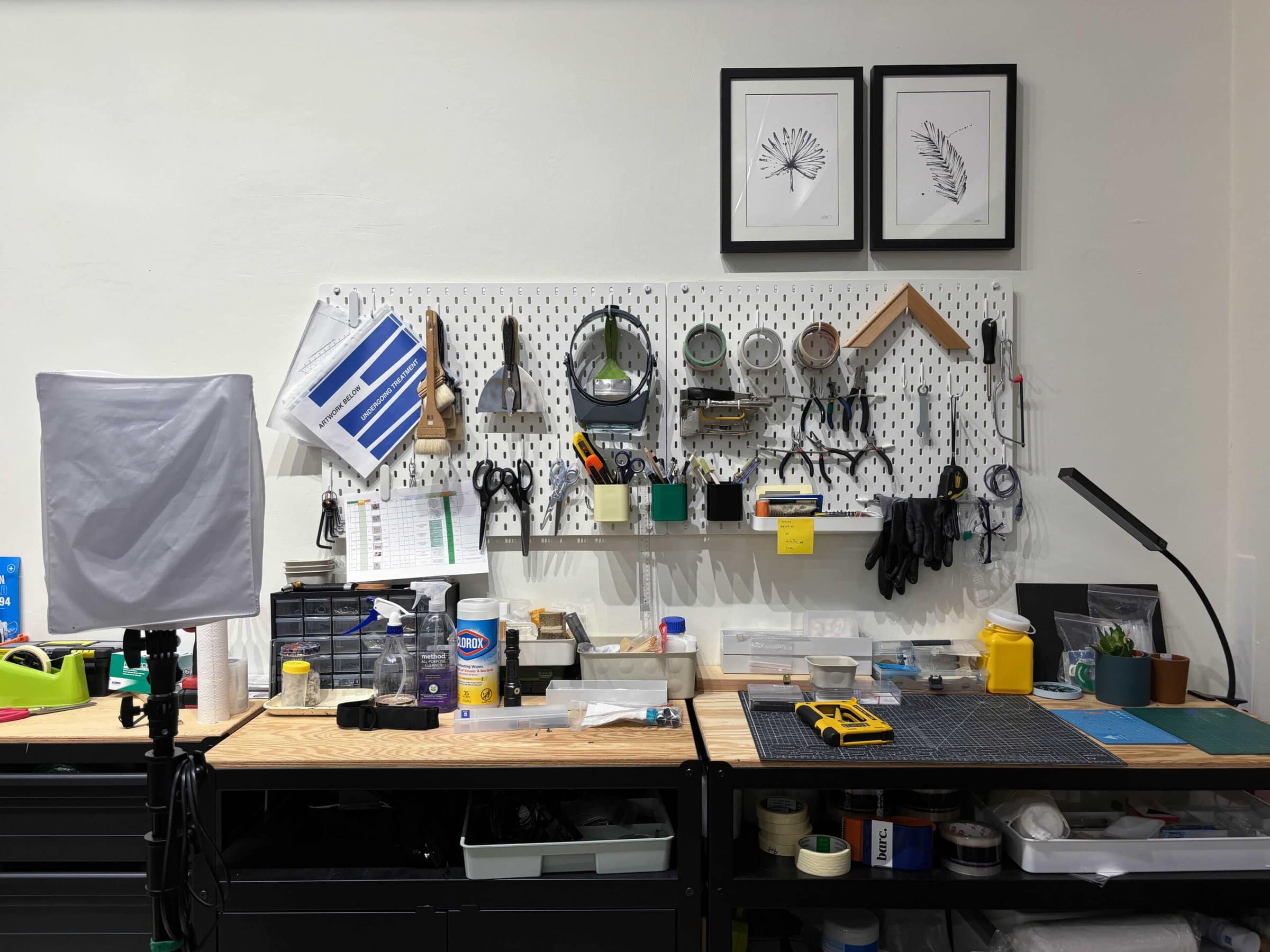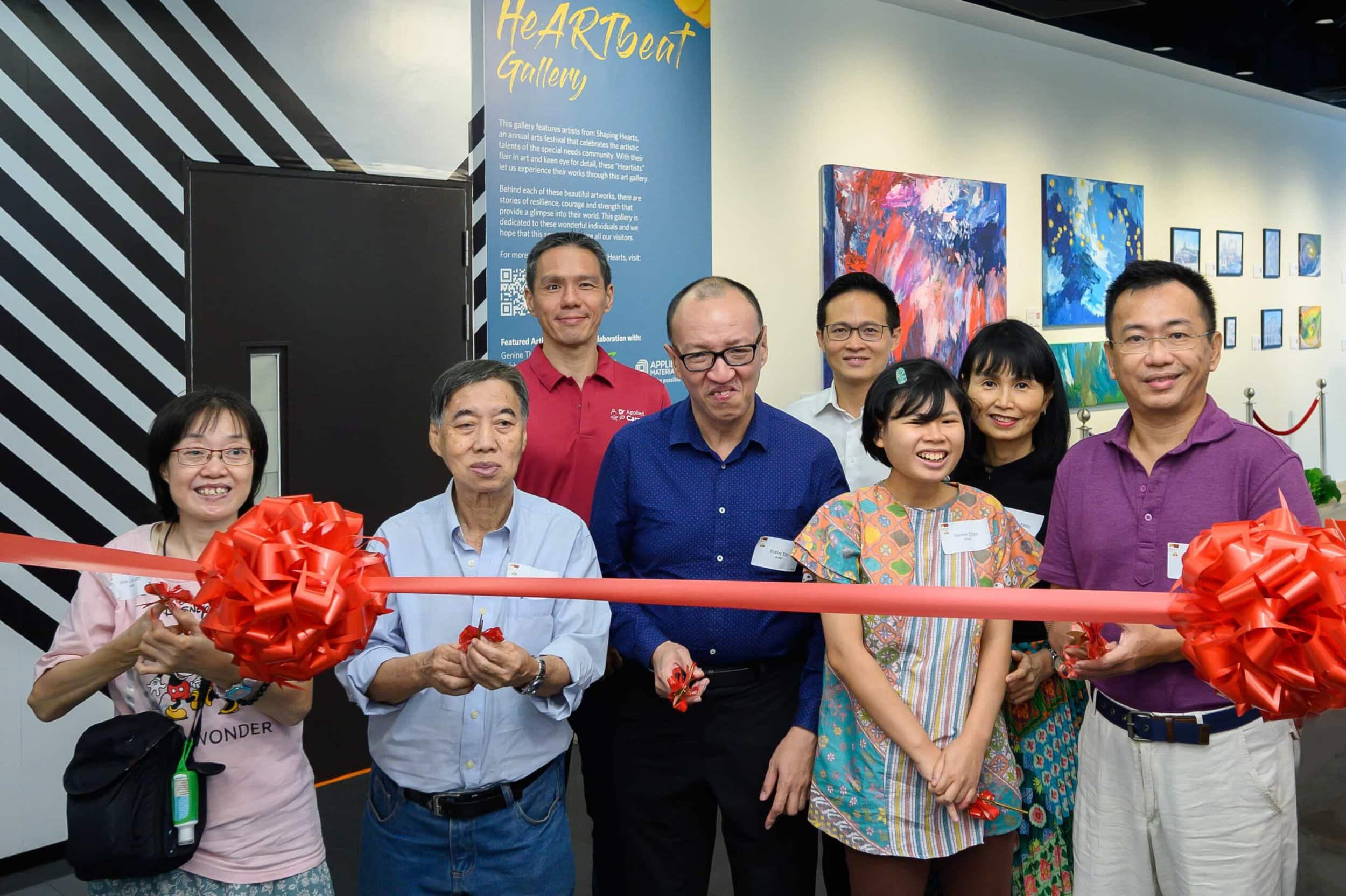Maria Madeira’s unwavering declaration—“I am a woman, and I’m proud”—set the stage for a profoundly moving journey through Timor-Leste’s first-ever national pavilion at the Venice Biennale.
The words were simple, but the emotions behind them were raw.
Austere yet visceral, the pavilion featured pale walls streaked with paint and betel nut. The artist walked slowly through the pavilion, continuing her story: “After Timor-Leste’s independence, I went back to my motherland. When I arrived I went to live with my brother in a rented house in Dili. In the bedroom where I slept, there were marks of lipstick—at a knee-high level that went all around the room in a linear position.”
She paused. “Every day, especially during the night, I looked at these marks. None of it made sense to me. Months later, after gaining some trust from an elderly neighbour, I finally learned the truth. My bedroom was a torture room.”

At this point, the performance took a dramatic turn. Sharply, almost violently, Madeira excavated excruciating feelings from deep inside her own body as she kept telling the story: “During the Indonesian military occupation, the Indonesian soldiers took Timorese women to this room. They were forced to put lipstick on and kiss the wall while these soldiers raped them.”
She leaned onto the walls, crying and moaning, as she channelled the spirit of these women. This abrupt outpouring of pain was almost too much for the audience to bear. The Timorese women in the room were the first to become teary, but soon everyone was overwhelmed with emotion.
By the end of the performance, which inaugurated the pavilion on its opening day, Madeira was shaking. The prime minister of Timor-Leste made a solemn speech about the victims of war in the country and then threw his arms around the artist, both melting in a hug of relief.

A stranger everywhere
Entitled Kiss and Don’t Tell, Timor-Leste’s inaugural pavilion amalgamates Timorese traditions, personal narratives of displacement, and universal struggles for identity.
To create the installation, Madeira sourced materials from her homeland (as well as Australia, where she now lives) with highly symbolic meaning. Red earth, representing her birthplace in Ermera, carries within it the roots of Timorese identity, while betel nut points towards the sacred rituals and traditions of her ancestors.
Having resided in Timor-Leste, Portugal, and Australia, Madeira has lived a life that resonates deeply with the theme of this year’s International Art Exhibition at the Venice Biennale—Foreigners Everywhere. Reflecting on her personal journey of displacement and identity-building, she recounts: “I always felt like a stranger everywhere I went. Always needed to survive and fight for my self-identity.” Her words echo the sentiments of countless individuals who find themselves caught between cultures, yearning for a place to call home.
The artist first grew up in the village of Gleno in the Ermera region of Timor-Leste. “My childhood was a dream,” she recalls. “I felt that I lived in paradise.”

One of eight siblings, she lived on a farm near a river, where nearly everything her family experienced and consumed came from the land. “I spent my days in the rice field and the river,” she says. “Primary school days were filled with joy, because every day I walked to school with many other children, absorbing the landscape and the smell of coffee.”
But, as dreams often do, this idyllic childhood came to an end. After Timor-Leste (then known as East Timor) declared independence from Portugal and was invaded by Indonesia in 1975, Madeira and her family fled, living as refugees in Portugal for several years before finally resettling in Australia.
When asked what she remembers from that time, she gravely answers: “Chaos.” Her memories of escape, as a child, are surprising. “There were a lot of families and children like me who thought everything was grand. First, a big boat took us from Kupang, West Timor, to Bali. Second, we got into a massive plane with no proper seats to [travel to] Guam and Honolulu, where I saw carpet and a TV for the first time. Most of us children were running around the airport and using the carpet to slide around as though we were surfing.”
After spending part of her early life in a Red Cross refugee camp on the outskirts of Lisbon, Madeira ultimately migrated with her family to Australia in 1983. Yet, in a life marked by displacement, she managed to cultivate a gift for art.

In the refugee camp, she became increasingly eager to draw and sketch. “I was always happy and felt a sense of calm every time I created an image.”
What led her to become a performer, however, was her participation in the choir Coro Loro Sa’e, alongside other young East Timorese girls. “I believe that being in the choir and creating was my escape from the horrible life of a young refugee, where poverty and hunger were constants,” she reflected. “When I drew and sang, the world became a better place.”
Telling Timorese stories
Representing Timor-Leste at the prestigious Venice Biennale holds profound significance for Madeira. The pavilion marks a pivotal moment in the young nation’s cultural history, offering a platform to share Timorese stories with the world. “It is a small step for me but a big leap for Timor-Leste’s contemporary art discourse,” she says.
Featuring tais, a Timorese textile, the pavilion blends craft practices with the performance language of contemporary art. For the remainder of the Biennale, it will include a film of Madeira’s haunting opening act, which also incorporated traditional songs in the Tetun language. “I consider myself an artist of tradition—my artworks often merge the traditional with the contemporary, the past and the present,” she explains.

For Madeira, the installation is not merely a static artwork, but rather a living entity that evolves with each retelling. “Every time I performed, I could not escape its truth and felt every moment of the pain and suffering of these Timorese women,” she states. Through her performance, she becomes the voice for the voiceless, cathartically channelling her people’s collective anguish into artistic expression.
I ask the artist if the performance was improvised or rehearsed, and she answers: “Both.”
“It was rehearsed in the sense that I had to perform several times before the opening at the Biennale. Improvised in the sense that I became a storyteller in front of the installation, not a performer,” she elaborates. “Every emotion I felt was real and not a performance. The emotional pain is a constant and the story is genuine. I think that made it much stronger for the audience to relate to and feel my pain.”

“As for delving into the emotional depths required for the performance,” Madeira admits, “it was overwhelming. But this story needed to be told. For too long, the narrative of Timor-Leste’s independence has been dominated by male voices. However, it’s important to highlight that the women of Timor-Leste played indispensable roles during the occupation. They were not just victims; they were active participants in the struggle for freedom. Their stories deserve to be heard.”
“I feel immensely grateful to have had the opportunity to share this narrative at such a prestigious event,” she says. “The world needs to know the truth about the sacrifices and resilience of Timorese women.”
Art as healing
Art can be a form of therapeutic escape, or a means of confronting the past head-on. For Madeira, it’s also a crucial part of national healing and growth. In Timor-Leste, she is recognised as one of the founders of Movimentu Kultura, a contemporary art group that draws upon the country’s traditions.
“Timor-Leste has never had an art school. We don’t have a proper art gallery or even a proper art shop,” she explains. “Our aim is to create awareness and … for East Timorese contemporary artists to have facilities and space to divulge our current creative expression.”

“I really believe that art is a critical vehicle [for] healing,” she concludes, adding that one of her main concerns as an artist, art educator, and cultural advisor is to convey Timor-Leste’s culture and traditions to other societies—and vice versa.
“It is my strong belief that art and culture are the spirit and soul of a nation, and a vehicle through which future generations can learn to appreciate the beauty and strength of their own culture—and, in this way, discover who they are in the world.”
___________________________________
Kiss and Don’t Tell by Maria Madeira, curated by Natalie King, is on view at the Venice Biennale until 24 November 2024.
Read more of our Venice Biennale 2024 coverage here.











